Designed by Abebe Alambo Adopted on 31 October 1996 Country Ethiopia | Proportion 1:2 | |
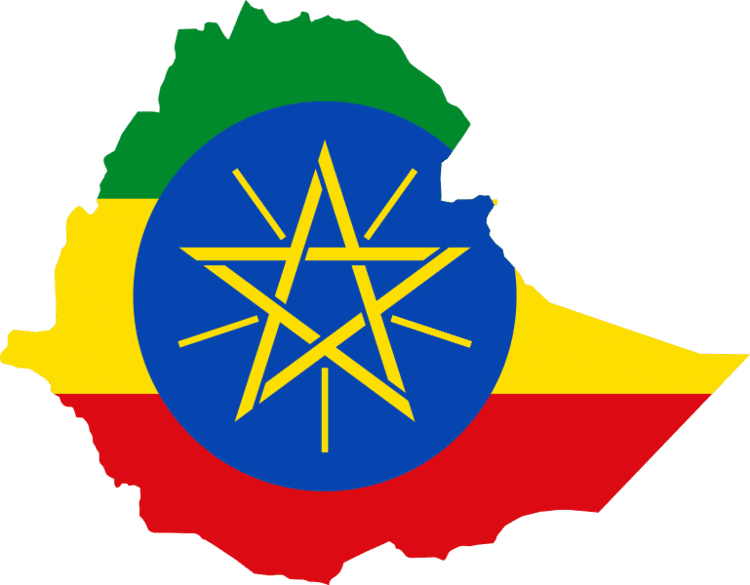 | ||
Design a horizontal tricolor of green, yellow and red with the National Emblem superimposed at the center. | ||
Prof logik walking flag of ethiopia
The national flag of Ethiopia (Amharic: የኢትዮጵያ ሰንደቅ ዓላማ?, ye-Ityoppya Sendeq Alama) was adopted on 31 October 1996. It conforms to the specifications set forth in Article 3 of the 1995 Constitution of Ethiopia. However, the diameter of the central disc is increased from that of the flag used from 6 February to 31 October 1996. The three traditional colours of green, yellow and red date back to Iyasu V (reigned 1913-1916). The current flag and emblem were adopted after the defeat of Ethiopia's Marxist Derg regime (in power from 1974 to 1991). The emblem is intended to represent both the diversity and unity of the country. Blue represents peace, the star represents diversity and unity, and the sun's rays symbolise prosperity. The green recalls the land, yellow stands for peace and hope, and red is symbolic of strength.
Contents
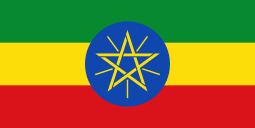
Colours
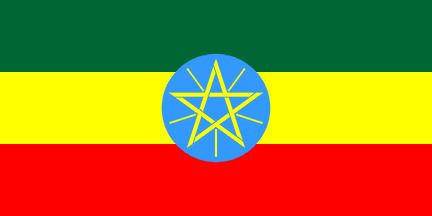
The green, yellow and red were used for the flag of the Ethiopian Empire in 1914. A year after Ethiopia decisively defended itself from Italian colonization at the Battle of Adwa, Menelik II on 6 October 1897 ordered the three pennants combined in a rectangular tricolor from top to bottom of red, yellow, and green with the first letter of his own name (the Amharic me) on the central stripe. In 1914 the flag was reversed to it's today's flag. The flag's tri-colour scheme has existed since the early 19th century, and the colours red, yellow, and green have carried special importance since at least the early 17th century.
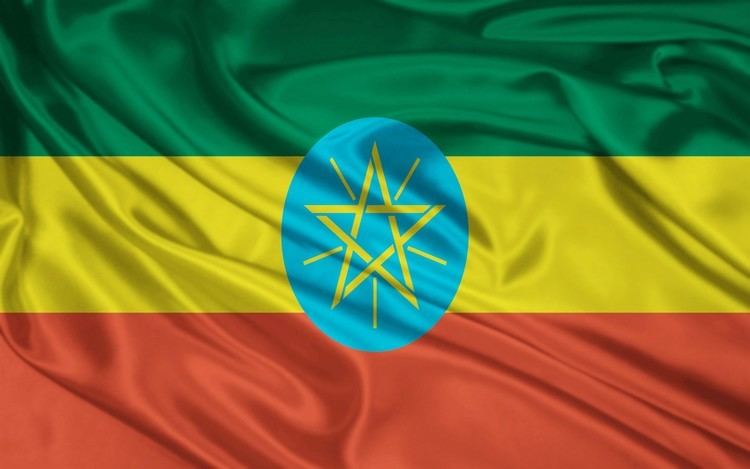
The royal flag often featured the emblem of a Lion of Judah, a crowned lion carrying a cross centred in the banner's yellow midsection. The flag is understood to be a link between the Ethiopian church, the peoples, and the nation that was united. The processional cross carried by the lion was the former flag or symbol of Ethiopia, and has likewise been in use since at least the early 17th century. Whilst red is currently featured at the bottom of the horizontal tricolour, this was reversed until the mid-19th century. The emblem was added in 1996. What the colours symbolise varies depending on point of view. However, generally, red represents blood spilled in defense of Ethiopia; yellow represents peace and harmony between Ethiopia's various ethnic and religious groups; and green is said to symbolize hope, or the land and its fertility. Upon gaining independence from colonial rule, several newly established countries in Africa adopted these three colours in homage to Ethiopia's resistance against foreign occupation. When adopted by Pan-Africanist polities and organizations for their activities, the colours are often referred to as the Pan-African colours.
Emblem
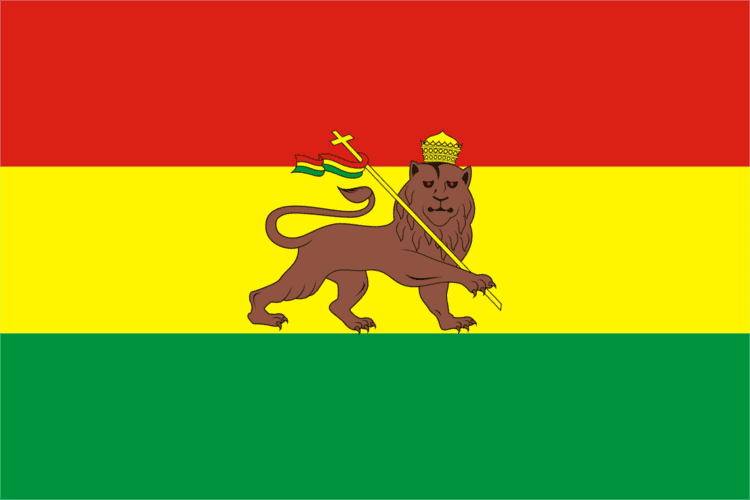
Prior to 1996 (and to some extent even today) the 'plain' flag was commonly seen across the nation and the world. Previously, especially during the Derg regime, a number of different emblems were experimented with. However, the basic colour schematic has remained constant. Even after declaring itself a Communist regime, the Derg did not dare to tamper with the colours' layout, but simply removed and changed the imperial emblem after Haile Selassie's overthrow. An alternative emblem featuring a five pointed star and rays over a cogwheel surrounded by a wreath of leaves is now the featured emblem.

The star is yellow on a blue disc which overlaps the green and red stripes. The star testifies to Ethiopia's bright future and possibly echoes the connection with the House of King Solomon, while the yellow rays which it emits are equidistant and are said to represent the equality of all Ethiopians regardless of race, creed, or sex. In recent years, the government of Ethiopia has taken a conscious effort to increase the usage of the flag with the emblem, which had been seen far less than the plain tricolour. As the plain tricolour was used and seen far more often than either the flag of the Derg or the Lion of Judah flag, this was considered unusual.
In 2009, the Parliament of Ethiopia passed Proclamation 654/2009 (The Federal Flag Proclamation), which prohibited firstly amongst 23 other provisions "use [of] the Flag without its Emblem", as well as "to deface the Flag by writing or displaying sings, [sic] symbols, emblems or picture [sic]", or "to prepare or use the Flag without the proper order of its colors and size or its Emblem." While most offences were punishable by a fine of "3000 birr or rigorous imprisonment up to one year," the first offense, mandating the usage of the emblem, received an increased penalty of "5000 birr or rigorous imprisonment up to one year and six months." This replaced the 1996 Flag Proclamation, which made no mention of offenses or penalties.
